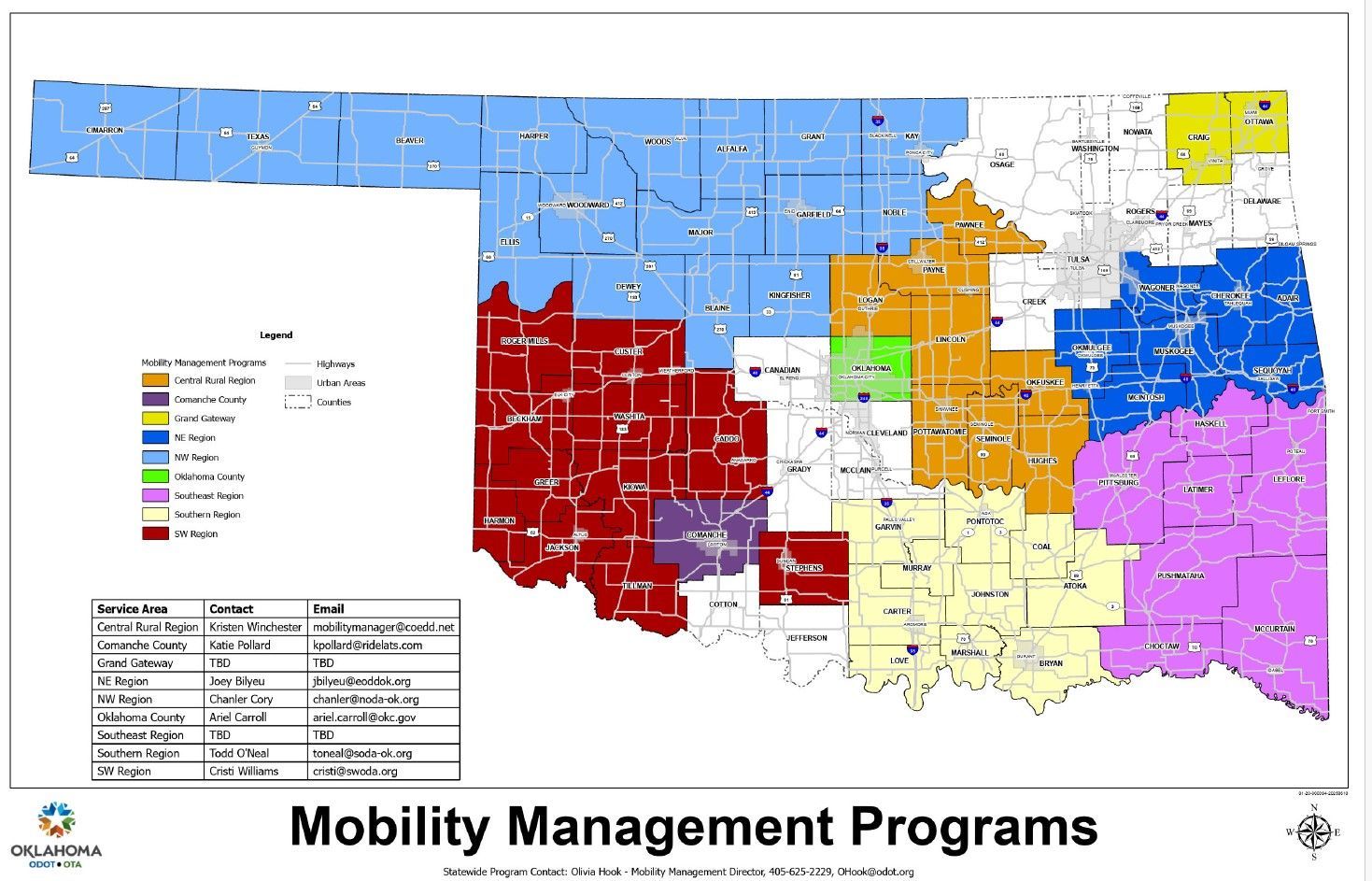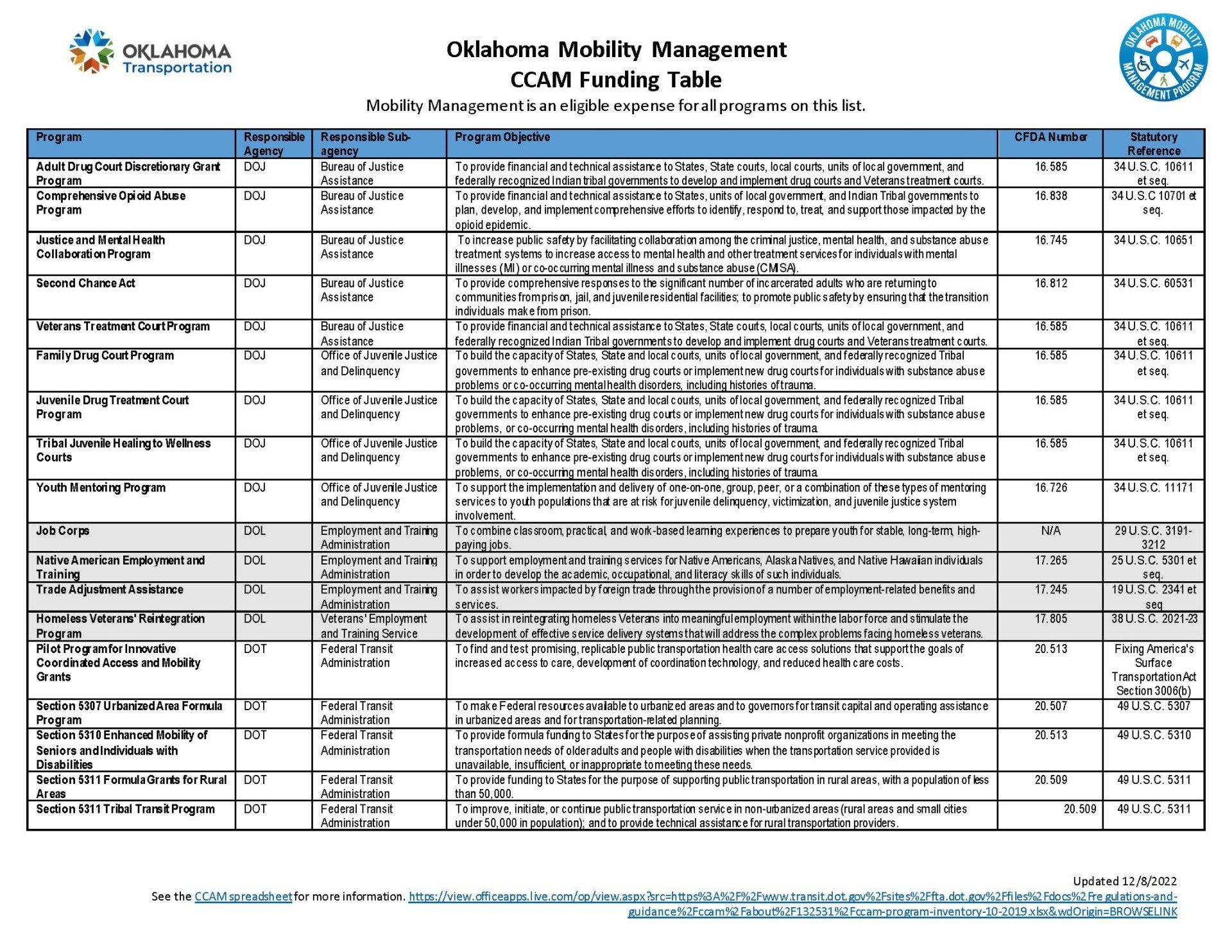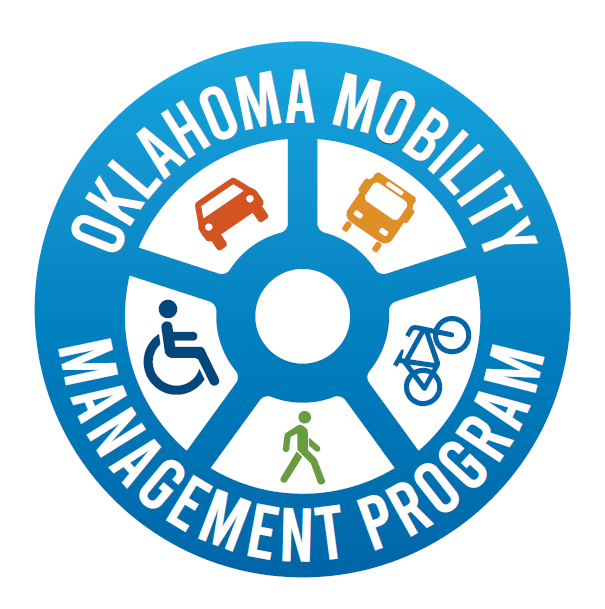More Programs are Needed
🚍 Help Bridge the Gap in
Mobility Management Across Oklahoma
Oklahoma currently has 10 active Mobility Management Programs—but 23 are needed statewide to ensure every region has access to coordinated transportation solutions.
Mobility management plays a vital role in helping older adults, individuals with disabilities, and low-income populations access critical services. These programs connect people to transportation options, improve coordination between providers, and work to close transportation gaps in local communities.
If you're a community-minded organization interested in becoming part of this statewide network, we encourage you to apply.
Why More Programs Are Needed
- Lack of access in many rural and underserved communities
- Current service areas are large and not able to meet the needs of all communities
- Growing demand for non-emergency medical transportation (NEMT) and cross-county trips
- Increased interest in volunteer driver networks, travel training, and community outreach
- The need for coordinated planning with local agencies and providers to reduce inefficiencies and duplication
With only 10 programs active, critical regions remain unserved. Your agency can be the difference.

How to Start a Mobility Management Program
Here is the step-by-step process for starting a new program in your service area:
1. Attend Coordination Meetings
Agencies must regularly attend regional coordination meetings to be eligible for mobility management funding (FTA Section 5310).
- Find meeting information on the Coordination Meetings section of our website.
2. Contact ODOT
Reach out to the Oklahoma Department of Transportation to express your interest in becoming a Host Agency. This is your opportunity to:
- Learn about program requirements
- Ask questions about federal grant guidelines
- Understand the reporting and contract process
3. Secure Local Match
The average cost of a mobility management program is $100,000 per year.
- Federal funding covers 80%.
- Agencies must secure a 20% local match through community support, grant funding, partner contributions, foundation or private grants.
4. Apply for the Program
Submit an application including:
- An annual budget
Program details (see Mobility Management
Program Guide for specifics)
Note: Application processes differ slightly for urban vs. rural areas.
5. Receive Contract Approval
Once approved by ODOT:
- A formal contract will be issued
- Contracts run October 1 – September 30 annually
- Mid-cycle contracts may be possible—contact us to discuss options
6. Hire a Mobility Manager
Once the contract is active:
- Hire or designate a staff member to serve as the Mobility Management Professional
- Submit regular invoices for reimbursement
7. Reapply Annually
To continue the program each year:
- Submit an updated budget and annual application for renewal
💡 Ready to Take the First Step?
Email us at ohook@odot.ok.gov to schedule an intro call. Together, we can expand transportation access and strengthen mobility for every Oklahoman.
The following documents are all part of the application process:
State Agencies in Oklahoma have programs that can fund Mobility Management

- Department of Transportation
- Department of Human Services
- Department of Education
- Department of Health
- Commission on Children & Youth
- Department of Justice
- Department of Labor
- Housing and Urban Development (HUD)
- USDA
- Veteran’s Affairs
*View the CCAM Funding Table to search for federal programs that fund mobility management initiatives.
Contact the ODOT statewide mobility manager to discuss mobility management funding.
Other funding sources:
- Non-profit agencies
- Community Services Block Grants
- Hospital Auxiliaries
- Title III B of Older Americans Act
- Levy Funds
- Local Legions including Elks, Shriners, Eagles, Moose, Rotary Club, etc.
- Associations
- Digressionary Grants
- Donations
Are you a potential funding source and looking to help? Contact Olivia at ohook@odot.org
Oklahoma House Bill 1688
Oklahoma HB1688 Effective November 1, 2020. Legislation creating the Advanced Mobility Pilot Program, which could further the state’s investment in emerging advanced transportation technologies, was signed into law by the governor on May 19. Sen. Micheal Bergstrom, R-Adair, was the author of Senate Bill 1688. The program allows for coordination between state government, community leaders and economic developers across the state to create jobs in emerging ground and aerial transportation technologies. Contingent upon available funds, the program will be housed under the Oklahoma Department of Transportation (ODOT).
History of Mobility Management
The mobility management concept appears to have developed in the 1990s, following passage of the 1991 Intermodal Surface Transportation Efficiency Act (ISTEA) with its multi-model philosophy. At the same time, some transportation agencies were beginning to recognize that their fixed-route transit services were not a “one-size fits all” solution to community transportation needs. As a result, some forward-thinking agencies began to offer additional transportation services, such as carpool and van pooling, subscription bus services, special shuttles, and dial-a-ride services, among others. The report defined a “mobility manager” as a “transportation organization serving the general public that responds to and influences demands of the market by undertaking actions and supportive strategies, directly or in collaboration with others.
Define Mobility Management
Mobility management is an innovative approach for managing and delivering coordinated transportation services to customers, including older adults, people with disabilities, and individuals with lower incomes. Mobility management focuses on meeting individual customer needs through a wide range of transportation options and service providers. It also focuses on coordinating these services and providers to achieve a more efficient transportation service delivery system.
Federal Transit Law (49 U.S. Code § 5302) defines mobility management as a capital project “consisting of short-range planning and management activities and projects for improving coordination
among public transportation and other transportation service providers carried out by a recipient or subrecipient
through an agreement entered into with a person, including a governmental entity, under this chapter (other than
section 5309); but excluding operating public transportation services.”
Click here to view the FTA mobility management brochure
